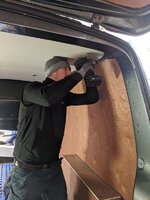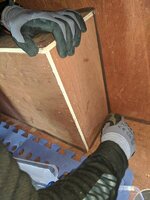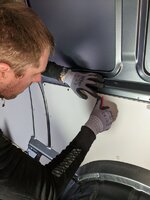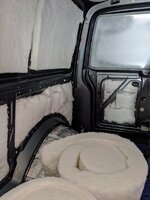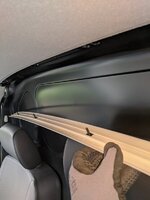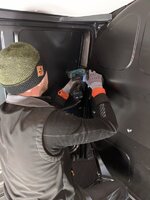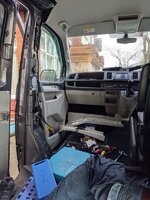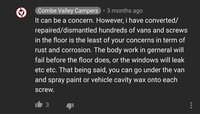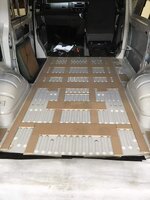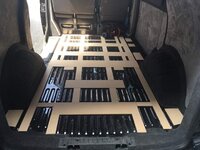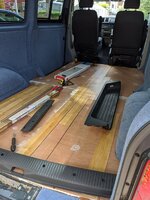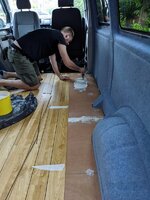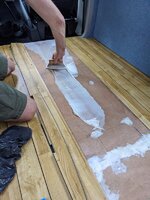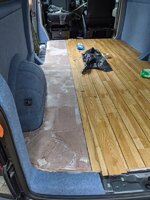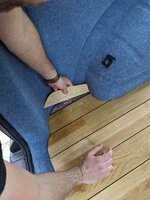Flooring Update
We saw Karndean fitted in one of the vans at the Motorhome show at the NEC and loved the finished so decided to go for it.
It was a 2 day process in the end, we bought a ply kit from Custom Shop Designs. As mentioned in the last post, it needed a bit of trimming here and there and by the time it was fixed down there were a few gaps to fill and sand (on the joins). Also filled all the countersunk screw heads to make sure it was perfectly flat/smooth. The adhesive went straight down onto the ply.
(Bought the adhesive from here,
F-Ball Styccobond F48 Flooring Adhesive 5lt/High Temperature Grade Vinyl Adhesiv | eBay)
Once the floor was good here's how we did it:
1. Found the centre line of van, took a couple of measurements across the 2 rear wheel arches, the boot catch any other points that were in the middle then put a laser level down and drew a centre line.
2. Laid the first row on the centre line and taped it down using masking tape so it couldn't move. The planks but up to each other, no tongue and groove or click system hence taping the first row to have something firm to but up against. Then worked out from the centre line to the far side (kitchen side), cutting as you go and using a scribe tool to help get round the tricky shapes. A few trial and error bits but it's pretty easy stuff to cut/trim and I knew i had excess boards so any i wasn't totally happy with, i used the botched one as a rough template and then made the changes.
3. Once fully laid over to the far side, i removed the tape from the near side of the centre row and worked back to the other side until basically you have fully laid it. When you spread the adhesive you only get 30 mins (that's the case with F-Ball F48 high temp one) so you need to make sure that you're not having to do any cutting etc whilst the glue is down.
4. Felt criminal to be lifting it up once down but we then started at the far side (kitchen side) and lifted 4 rows at a time. We were careful to stack the lifted planks (and strips) in order to make sure we knew exactly where each one had to go.
5. Spread the glue (you have to use a special A2 trowel which spreads it to the correct depth (
A2 Adhesive Spreader 18cm: Amazon.co.uk: DIY & Tools) spread as close to the edge as we could then right up to the edge of the 5th row.
6. You get 30 mins so butting up tight to the 5th row still on the floor we put the 4 rows back down, then once they are down you have something firm to work against to come back the other way towards the sliding door 4 rows at a time.
The last 4 rows are pretty tricky as you don't have much space to work in as we tried to stay of the floor we'd laid as much as possible but that's essentially it.
One issue we did face, as you spread the glue up to the line of the row that is just sat in place, some of the glue bled underneath that row meaning when we lifted it up to spread glue under that area it had glue on the back of it so we had use wipes to clean them off and make sure they were nice and clear to get a good flat finish. It's best to do 3-4 rows but finish on a black strip each time so that next time you're starting with a plank rather than a strip as they are fiddly to glue up to - basically as you spread the glue up to the strip when the trowel touches it, the strip moves because its so light...
Here's a few pics we took along the way...
View attachment 74714View attachment 74715View attachment 74716View attachment 74717View attachment 74718View attachment 74719View attachment 74721View attachment 74722



